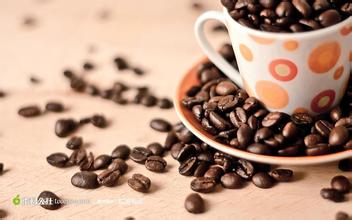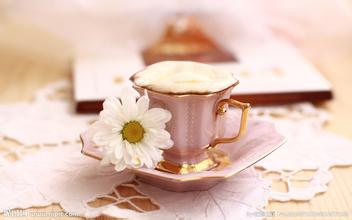Introduction to the difference between coffee beans grown in Liberia and Arabica flavor
Introduction to the difference between coffee beans grown in Liberia and Arabica flavor
Coffea liberica does not want to go into great detail here, because his trading scope is very small, usually not used, what we are talking about is not very often, so let's briefly describe it here. The origin of Liberian coffee is in West Africa, and it has strong adaptability to all kinds of environments, such as high and low temperature, damp or dry, except that it is not resistant to leaf rust, and Arabica species are not resistant to leaf rust. However, the flavor of Liberian species is worse than that of Arabica species, and the bitterness is extremely severe, so it is only traded on the domestic market in some West African countries, or planted for research. Bean-shaped spoon-shaped, large, tree height of 10m, cultivated at a height of less than 200m, strong rot resistance
Robasta coffee trees are native to Madagascar in central and western Africa and Indonesia in Asia, and account for about 20% to 30% of the world's output. Robasta coffee tree is suitable for planting in the lowlands below 500 meters above sea level, has strong adaptability to the environment, can resist bad climate, resist diseases and insect pests, and does not need much artificial care during soil preparation, weeding and pruning. It can be allowed to grow in the wild, and it is a kind of coffee tree that is easy to cultivate. But its finished product tastes more bitter than Arabica, its caffeine content is higher, and its quality is much lower, so it is mostly used to make instant (instant) coffee. Since it is mainly produced in Africa, most Africans drink robastian coffee.
Liberian species
The Liberian species, the large-grained species, is native to Liberia in Africa, as well as a few countries such as Malaysia. Its cultivation history is slightly shorter than the other two coffee trees. Liberian coffee trees are suitable for growing in lowlands. Its trunk is high and strong, it is 18 meters high, its leaves are large and tough, and its fruits and coffee beans are also very large. Its seed coat is close to the seed kernel and is scarlet when it is mature. The quoted flavor is strong, the caffeine content is medium, the irritation is strong, and the quality is poor. Because of its unique taste, low demand and small cultivated face value, it produces less than 5% of the world's coffee production.
Esselsa species
Ethel sa is a variety discovered in 1904, which is native to the Charlie River Basin in Africa, with small fruit and high yield per plant, especially a drought-resistant variety. The product has a strong flavor, slightly bitter taste and less cultivation.

Important Notice :
前街咖啡 FrontStreet Coffee has moved to new addredd:
FrontStreet Coffee Address: 315,Donghua East Road,GuangZhou
Tel:020 38364473
- Prev

Coffee Bean Red Processing Half-day Sunning Red Honey Boutique Coffee Product Introduction
Coffee beans red treatment method half-day sun red honey boutique coffee single product introduction 1, bean selection: the harvested fruit into the tank filled with water, mature fruit will sink, and immature and overripe fruit will float up, can be removed. 2. Drying: Put the selected mature fruits on the square for 5-6 days until they are fully dried. At this point, the fruit becomes dark brown, moisture content
- Next

Introduction to Grinding scale of Food Safety Standard grading Flavor description treatment method for Coffee beans
Standard for Food Safety of Coffee beans Flavor description method Grinding scale Columbia Coffee is divided into three levels: Supremo,Excelso,Extra, of which Supremo is the highest and Extra is the last; Excelso here is a mixture of the first two to meet the needs of commercial coffee buyers. This fast-growing coffee already exists in most parts of Colombia.
Related
- Guji coffee producing area of Guji, Ethiopia: Humbela, Shakiso, Wulaga
- What is the most expensive variety of Qiloso in BOP multi-variety group?
- How to store the coffee beans bought home?
- Why are Yemeni coffee beans so rare now?
- Ethiopian Sidamo all Red Fruit Sun Sun Santa Vini Coffee beans
- SOE is mostly sour? What does it mean? Is it a single bean? what's the difference between it and Italian blending?
- Is Italian coffee beans suitable for making hand-brewed coffee?
- How to choose coffee beans when making cold coffee? What kind of coffee beans are suitable for making cold coffee?
- Just entered the pit to make coffee, what kind of coffee beans should be chosen?
- Can only Japan buy real Blue Mountain Coffee? What are authentic Jamaican Blue Mountain coffee beans?

